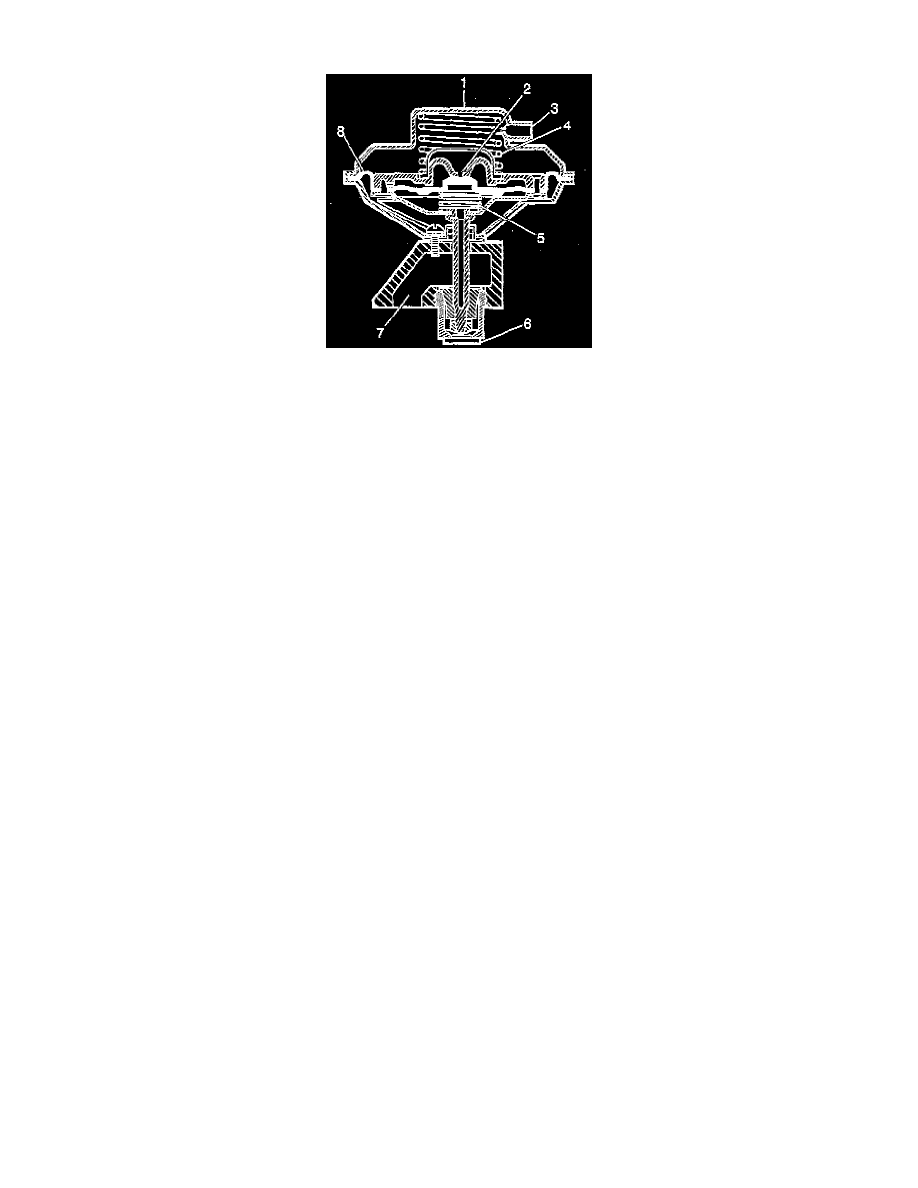Roadmaster Estate Wagon V8-350 5.7L VIN P SFI (1996)

EGR Valve: Description and Operation
DESCRIPTION
Negative Backpressure Valve
The Exhaust Gas Recirculation (EGR) valve used on this engine is a negative backpressure valve. It varies the amount of exhaust gas flow into the
manifold depending on manifold vacuum and variations in exhaust backpressure.
The diaphragm on this EGR valve has an internal vacuum bleed hole which is held closed by a small spring when there is no exhaust backpressure.
The amount of vacuum to the valve is controlled by an Powertrain Control Module (PCM) controlled solenoid valve.
OPERATION
Engine vacuum opens the EGR valve against the pressure of a large spring. When vacuum combines with negative exhaust backpressure, the
vacuum bleed hole opens and the EGR valve closes.
The following DTCs will diagnose the EGR system:
^
DTC P0400-EGR System
^
DTC P0403-EGR Solenoid Control Circuit
Too much EGR flow dilutes the fresh intake air/fuel mixture causing the engine to operate roughly or stall. With to much flow (at idle, cruise, or
cold operation) tends to weaken combustion and may result in any of the following conditions:
^
Engine stops after cold start.
^
Engine stops at idle after deceleration.
^
Vehicle surges during cruise.
^
Rough idle.
Too little or no EGR flow allows combustion temperatures to get too high during acceleration and load conditions. This could cause the following:
^
Spark knock (detonation).
^
Engine overheating.
^
Emission test failure.
LEGEND
(1) EGR Valve
(2) Air Bleed Hole
(3) Vacuum Port
(4) Large Spring
(5) Small Spring
(6) Exhaust Gas
(7) Intake Air
(8) Diaphragm
